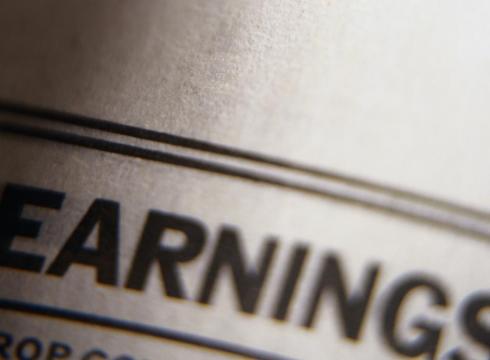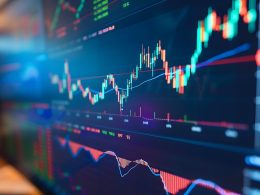by Cole Smead, CEO, Portfolio Manager, Smead Capital Management
Dear fellow investors,
A wise man once said that generally accepted accounting principles (GAAP) is where you start. It may not be the most economic way of looking at a business for various reasons. To look back at how investors could be affected by this, we always recommend Quality of Earnings: The Investor’s Guide to How Much Money a Company is Really Making by Thornton L. O’Glove. The author walks through multiple examples of situations where he believes investors should make adjustments when analyzing financial reports.
The book was published in 1987, so most people may consider it an old-timers’ book. We do agree that parts may not be as appropriate, as the accounting world regularly changes the goal posts of what is “generally accepted.” However, it is the practice of adjustments that the book reinforces. Adjusting for Outliers may be a better title, but the book is timeless in its cultivation of intellect.
What caused us to look back at the book is a twofold reason. First, the investors of Smead Capital Management are not naturally attracted to capital-intensive businesses. Capital investment is not the goal. Capital returns are. This naturally favors us avoiding major capex cycles in various industries. In the 2010s, we were often asked why we didn’t own any energy stocks. The answer was simple.
‘American Energy Independence’ was a political term used to excite Wall Street and investors to “Drill, Baby Drill.” Energy producers responded by doing so. However, energy producers are, by nature, businesses that can sustain 10% to 20% returns on capital (very similar to banks), but have trouble running long-term returns of 20% or greater. When you take this and add a massive amount of capex, you can take these returns on capital to single digits. Even worse, some producers ran negative returns on capital and had to borrow. Wall Street was glad to raise the money for them, and investors were happy to follow along. Liquor, ladies and leverage are what can ruin a man, according to Charlie Munger. In the oil business, the real killer was leverage and the industry was punished for trying to create ‘American Energy Independence.’
What the energy producer taught analysts was that you couldn’t focus just on the depreciation charges from the capitalization of assets from your net income when new oil and gas projects were started. Many of the producers in that era showed attractive net income. This is what we call the accounting profit of the business. In comparison, if you looked at the free cash flow of the energy companies, there was very little. Free cash flow is a good view of a company’s economic profits or what the investors of Smead Capital Management like to call owner earnings. In the long run, economic profits were the tell. The accounting profits were misleading.
The second reason for revisiting the book was all the outliers in financial reports that investors are looking past in the US stock market. We will use DocuSign (DOCU) as an example. DocuSign is a great product that we love using. It’s the most dominant player in digital signature services with Adobe as a number two competitor. However, there is very little in economic profits, despite their dominance. In their fiscal year 2025, they made roughly $1.05 billion in net income. The free cash flow that year was $920 million. Except that still isn’t the economic profits. To figure that out, you need to take out a very large capital expense: stock-based compensation. This charge was $610 million. When you account for this, DOCU only made $340 million in economic profits. This means that only 30% of the accounting profits are economic profits. There is a big difference between buying a business that makes $1.05 billion and $340 million. You can decide what you would do. You’ll rarely find a security that falls 70% from its prior high and still trades at 50x economic profits as this security does currently. Maybe Mr. Market doesn’t currently understand economic profits.
Axon (AXON) is the premier security as a service business globally, providing tasers and body cameras to police, security forces and governments globally. Investors in the stock have been handsomely rewarded for owning the stock over the last five years. Axon produced about $380 million in net income in 2024. They show that they produced roughly $330 million in free cash flow that same year. The stock compensation in 2024 was $383 million. This means that Axon produced negative economic profits. At today’s $58 billion market cap, it makes you wonder. It makes us think that boomers will come up with a joke that millennials have helped build some of the best businesses in the world and they ultimately made no money (economic profits).
The oil example and the other two companies mentioned are just a frame of reference for understanding a potentially much bigger problem. We are all hearing about the hyperscalers and the massive amount of AI capex spend. It sounds an awful lot like the frackers and “Drill, Baby Drill” to the investors of Smead Capital Management. We looked into Google’s (GOOG) numbers to unpack what is going on today compared to the past.
In 2016, Google produced $19.5 billion in net income. They made $25.8 billion in free cash flow that year. The stock-based compensation was $6.7 billion, leaving $19.1 billion in economic profits. This means their accounting profits were very similar to their economic profits that year ($19.5 billion versus $19.1 billion). This is a high quality of earnings.
Fast forward to today. Google made net income of roughly $100 billion in 2024. Their free cash flow in the same period was about $73 billion. When you remove the stock-based compensation of $23 billion, the economic profits of the business were $50 billion. This is half of what they are showing in accounting profits. In other words, this makes the business look much cheaper than it really is.
Again, this is the difference between depreciation charges tied to their capital investment, primarily in AI, versus the actual cash costs of capex in 2024. Why do we think it is so dangerous? It’s the same thing the oil companies did during the 2010s until investors cried uncle. The problem is getting worse. Based on Google’s second quarter 2025 report, capex is outkicking the coverage of the analyst community. Google lost $700 million in economic profits in the second quarter. The loss would be larger if you normalized the tax payment to account for the one-time accelerated depreciation of their AI capex spending.
The quality of earnings today is poor in a market that trades at 21-times accounting profits. If these accounting profits are as overstated as they look in the cases of the mega cap and large cap stocks cases like DOCU, AXON and GOOG, it’s time to be fearful where others are greedy. After all, how many investors enjoyed this type of behavior in the energy business? It means the stock market is much more expensive. When someone asks you what the quality of earnings means, your reply should be, “Let me Google that for you.”
Play The Long Game,

Cole Smead, CFA
The information contained in this missive represents Smead Capital Management’s opinions, and should not be construed as personalized or individualized investment advice and are subject to change. Past performance is no guarantee of future results. Cole Smead, CFA, CEO and Portfolio Manager, wrote this article. It should not be assumed that investing in any securities mentioned above will or will not be profitable. Portfolio composition is subject to change at any time and references to specific securities, industries and sectors in this letter are not recommendations to purchase or sell any particular security. Current and future portfolio holdings are subject to risk. In preparing this document, SCM has relied upon and assumed, without independent verification, the accuracy and completeness of all information available from public sources. A list of all recommendations made by Smead Capital Management within the past twelve-month period is available upon request.
©2025 Smead Capital Management, Inc. All rights reserved.
This Missive and others are available at www.smeadcap.com.















